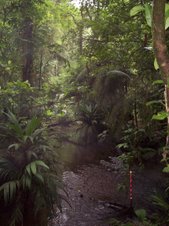This chapter discussed methods for plotting 2+ sample data, looking for correlations, linear regression, etc. (strange to be discussing linear regression prior to learning how to do a t-test! Usually it's the other way around...)
They discussed some odd graphical methods (odd in that I've never seen or heard of them before) - like qqplots. I still don't grasp when you would use these, or how to read them. To me, it seems easier to compare density plots or - better yet - boxplots. Lee got us into using boxplots in his stats class last fall, and I'm really beginning to see just how useful they are for viewing the spread and means/medians of data.
I'm glad to see that Pearson correlation coefficients can be calculated so easily! I'll need to calculate a bunch of them for my independent project, and I can't recall using them before. One less thing to worry about :)
Wednesday, February 7, 2007
Subscribe to:
Post Comments (Atom)




2 comments:
It is nice to learn something relevant for your independent project! This class is hopefully going to be much more practical than others. Anywho, thanks for the global warming links. And how about Thursday's class? I liked this lab much better!
Nicole,
Hey! I like the little synopsis about Ch 3. What a great way to make notes to remind yourself what we are learning!
About the Pearson stats, I noticed that the paper we are reading for journal club this week used "Pearson's correlation coefficients" in determining correlations between leaf area and shoot biomass (p 1682, top left).
Learning stats is like learning a new language that is helping me to navigate through the some of the foreign areas of biological literature!
See you tomorrow!
Cheers,
Rebecca
Post a Comment